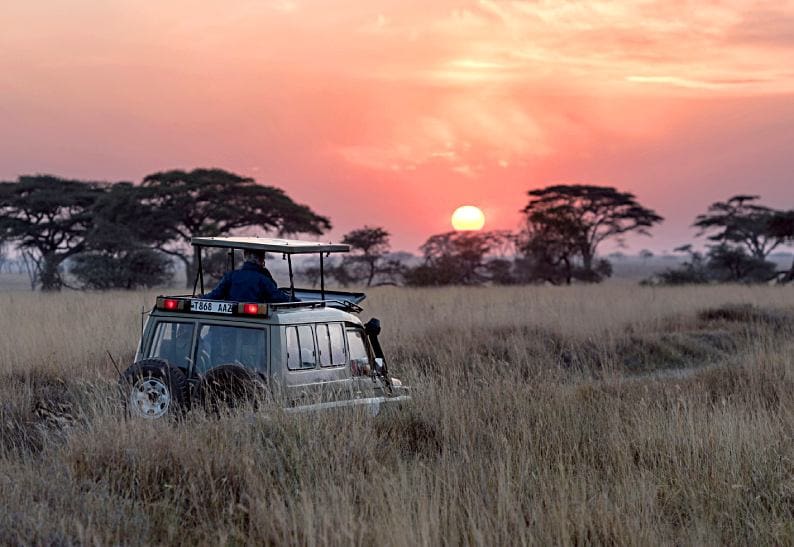words Al Woods
Embarking on a wildlife holiday as a solo traveler can be an incredibly rewarding experience, offering a unique opportunity to immerse yourself in nature, observe fascinating creatures in their natural habitats, and gain a deeper appreciation for the wonders of the natural world. However, traveling alone for a wildlife adventure also comes with its own set of challenges and considerations. In this comprehensive guide, we’ll explore tips and insights to help you plan and navigate a solo wildlife holiday with confidence and make the most of your experience.
-
Choosing the Right Destination and Wildlife Experience
The first step in planning a solo wildlife holiday is to choose a destination and wildlife experience that aligns with your interests, skills, and comfort level. Consider your preferred type of wildlife, whether it’s observing majestic elephants in Africa, or spotting elusive big cats in India. Research the best times of year to visit for optimal viewing opportunities and favorable weather conditions.
It’s also essential to evaluate the level of adventure and physical exertion involved. Some wildlife holidays may involve strenuous hikes or camping in remote areas, while others offer more comfortable accommodations and guided tours. Be honest with yourself about your abilities and limitations, and choose an experience that matches your fitness level and preferences.
-
Joining a Small Group Tour or Going Solo
One of the key decisions you’ll need to make is whether to join a small group tour or embark on a fully independent solo adventure. Both options have their pros and cons.
Small group tours offer the advantage of having a knowledgeable guide, shared experiences with like-minded travelers, and increased safety in numbers. Many tour operators specialize in solo-friendly wildlife holidays, catering to the needs and interests of solo travelers. These tours often include comfortable accommodations, transportation, and expert guidance, allowing you to focus on the wildlife experience without worrying about logistics.
On the other hand, independent solo travel offers unparalleled freedom and flexibility. You can tailor your itinerary to your specific interests, move at your own pace, and have complete control over your schedule. However, this approach requires more planning, navigation skills, and self-reliance, as you’ll be responsible for arranging accommodations, transportation, and exploring unfamiliar areas.
-
Safety Considerations for Solo Wildlife Holidays
Safety should be a top priority when embarking on a solo wildlife holiday. Research the potential risks and dangers associated with your chosen destination and take appropriate precautions. This may include obtaining necessary vaccinations, carrying essential safety equipment, and familiarizing yourself with local emergency services and protocols.
If you’re joining a small group tour, choose a reputable and experienced operator with a strong safety record. Read reviews and ask about their safety protocols, guide qualifications, and contingency plans in case of emergencies.
For independent solo travelers, it’s crucial to have a thorough understanding of the local wildlife and their behaviors. Respect their habitats and follow all guidelines and regulations to ensure your safety and the well-being of the animals.
-
Packing Essentials for a Solo Wildlife Holiday
Proper packing is essential for a successful solo wildlife holiday. In addition to the usual travel essentials, you’ll need to pack specialized gear and equipment tailored to your chosen destination and wildlife experience.
Some essential items to consider include:
- Binoculars or a high-quality camera with a telephoto lens for optimal wildlife viewing and photography
- Appropriate clothing and footwear for the climate and terrain (e.g., lightweight, breathable fabrics, sturdy hiking boots)
- Sun protection (e.g., hat, sunscreen, sunglasses)
- Insect repellent and protective clothing (if necessary)
- First-aid kit and essential medications
- Waterproof bags or dry bags to protect your gear from the elements
- Snacks and water (if you’ll be spending extended periods in remote areas)
- Navigation tools (e.g., map, compass, GPS device)
Consider investing in high-quality, durable gear that can withstand the rigors of your wildlife adventure. Additionally, research any gear or equipment restrictions or requirements specific to your destination or tour operator.
-
Budgeting and Travel Insurance
Wildlife holidays can be expensive, especially if you’re traveling independently or joining a specialized tour. It’s crucial to plan your budget carefully, accounting for transportation, accommodations, meals, guides, parking fees, and any necessary gear or equipment rentals.
Consider purchasing travel insurance that covers emergency medical expenses, trip cancellations or interruptions, and other unforeseen circumstances. Look for policies that specifically cover adventure activities and wildlife interactions, as some standard policies may exclude certain activities or destinations.
-
Staying Connected and Sharing Your Experience
While solo travel often involves disconnecting from the digital world, it’s still essential to have a means of communication for emergencies or updates with loved ones back home. Research the availability and reliability of cellular networks and WiFi in your destination, and consider carrying a portable power bank or solar charger to keep your devices powered.
Additionally, consider how you’ll document and share your solo wildlife adventure. A compact camera, smartphone, or even a travel journal can help you capture memories and share your experiences with friends and family back home.
-
Embracing the Solo Experience and Meeting Fellow Travelers
One of the greatest joys of solo travel is the opportunity for personal growth, self-discovery, and immersion in new experiences. Embrace the solitude and freedom that comes with being a solo traveler, but also be open to meeting fellow wildlife enthusiasts and sharing your passion for nature.
If you’ve joined a small group tour, take advantage of the shared experiences and camaraderie with your fellow travelers. Swap stories, share tips, and support one another throughout the journey. For independent solo travelers, consider joining online communities or forums dedicated to wildlife travel, where you can connect with like-minded individuals, seek advice, and potentially arrange meetups or shared activities.
-
Respecting Local Cultures and Minimizing Your Impact
When traveling to remote or protected areas for wildlife viewing, it’s essential to respect local cultures and minimize your impact on the environment. Research and adhere to any cultural norms, dress codes, or etiquette specific to your destination.
Additionally, follow all guidelines and regulations regarding wildlife interactions and conservation efforts. Avoid disturbing or harassing animals, and leave no trace of your presence in natural habitats. Consider supporting local conservation efforts or contributing to organizations dedicated to protecting the wildlife and ecosystems you’re visiting.
-
Savoring the Moment and Creating Lasting Memories
Above all, a solo wildlife holiday should be an opportunity to immerse yourself in the beauty and wonder of nature, disconnecting from the distractions of daily life and savoring the present moment. Take the time to appreciate the sights, sounds, and sensations of your surroundings, and allow yourself to be awestruck by the incredible diversity of life on our planet.
Document your experiences through photographs, journaling, or sketching, and create lasting memories that you can cherish for years to come. Share your stories and insights with others upon your return, inspiring them to embark on their own solo wildlife adventures.
Final Words
Embarking on a solo wildlife holiday can be a transformative experience, offering a unique opportunity to connect with nature, challenge yourself, and gain a deeper understanding of the world around you. By following these tips and embracing the spirit of solo travel, you can experience your wildlife adventure with confidence, safety, and a profound sense of wonder and appreciation for the incredible diversity of life on our planet.







